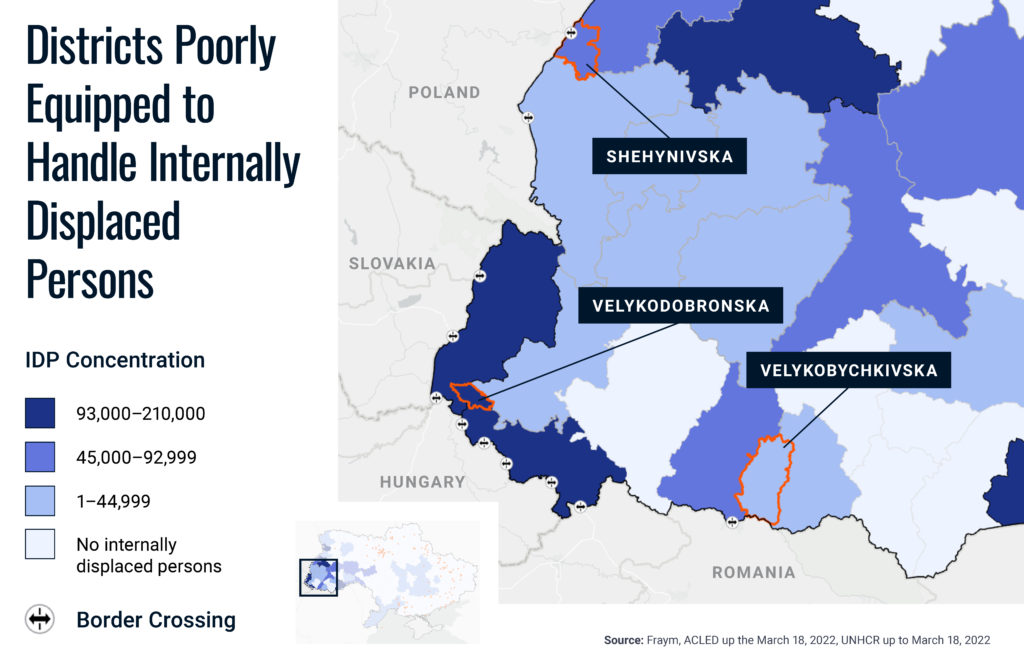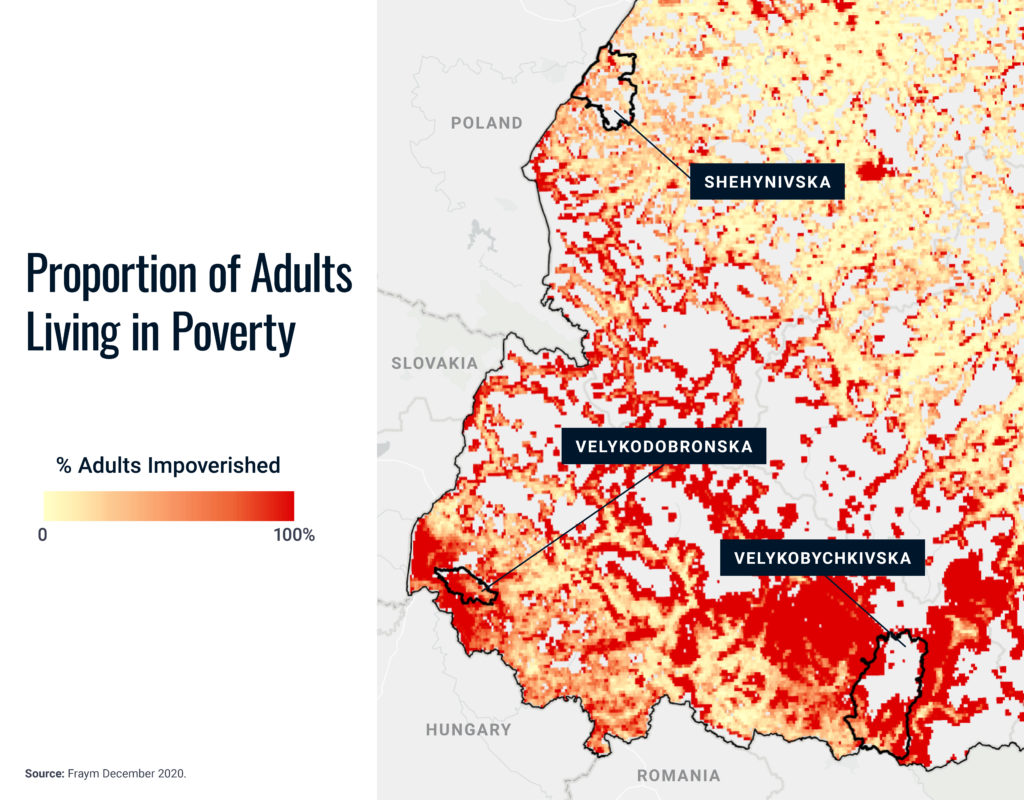Build Effective Social and Behavior Change Strategies

Many Ukrainian cities are struggling with the sudden influx of internally displaced persons (IDPs). Lviv, near the Polish border, has received over 200,000 IDPs since the war began. “We’re at the limits of our capacity,” said Andriy Sadovyy, Liviv’s mayor.1
Relative to other areas, however, Lviv is relatively well-positioned to handle the population surge. It is a large, affluent city and the business hub of Western Ukraine.
Poorer areas may be worse equipped to handle their IDP populations and could benefit from more humanitarian aid. Local and actionable data can help identify struggling host communities.
For this analysis, we use Fraym data to identify struggling host communities. Our data provides customized, localized insight on people’s income, employment, and economic outlook immediately prior to the Russian invasion, allowing us to pinpoint communities – down to one square kilometer resolution – that may lack adequate resources to feed, clothe, and house IDPs.
Fraym’s most recent data in Ukraine was collected in February of 2022.
Fraym identified three districts in particular that stood out in terms of five metrics:2
These three districts are Velykodobronska, Shehynivska, and Velykobychkivska located in the Carpathian region of the country. As of mid-March, there were about 44,000 total IDPs in these three districts according to the International Organization for Migration (IOM)3. With an existing resident population of about 53,000 total, this influx of IDPs has nearly doubled these districts’ populations.

| District | Reported IDPs | Poverty | Unemployment | Economic Optimism | Dissatisfied w/Food Security Efforts |
|---|---|---|---|---|---|
| Velykodobronska | 11,000 | 28% | 15% | 22% | 49% |
| Shehynivska | 12,000 | 11% | 15% | 21% | 52% |
| Velykobychkivska | 21,000 | 23% | 17% | 20% | 46% |
In these districts, up to one-in-three adults live in poverty compared to the national average of just 6 percent. They also show high levels of pre-war unemployment, low levels of economic optimism, and high levels of dissatisfaction with government food security efforts immediately prior to the war.4

Fraym is working to make this Ukraine data available to the USG and other organizations with a mission need. Please send a request to [email protected].
[1] https://www.ft.com/content/d40e0091-a972-4bf9-863d-800debb0a1f3
[2] Individuals are considered poor if their income hardly covers the cost of food, unemployed if they report their employment as “not working/looking for work”, economically optimistic f they rate their current economic situation as “good” or “very good”, and dissatisfied with food security efforts if they say the government is handling “badly” or “very badly” the issue of ensuring everyone has enough to eat.
[3] https://dtm.iom.int/ukraine
[4] Poverty data were collected in December 2020 while data on unemployment, economic optimism, and dissatisfaction with food security were collected in February 2022.